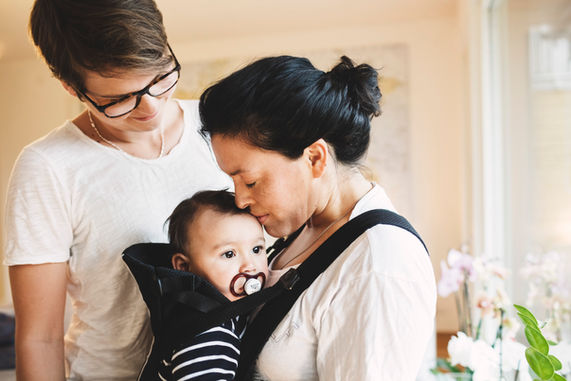Contributory Parent Visa (Subclass 143)
ABOUT THIS VISA
The Contributory Parent Visa (Subclass 143) is a permanent visa that allows the parent of a settled Australian citizen, Australian permanent resident or eligible New Zealand Resident stay permanently in Australia. You can be in or outside Australia when you apply for this visa.
CONTRIBUTORY PARENT VISA SUBCLASS 143
To be eligible for the Contributory Parent Visa (Subclass 143), you will need to:
-
Be sponsored by an eligible sponsor which is usually your child. If your child is under 18, you can be sponsored by an eligible relative or community organisation. This sponsorship must be approved by the Department.
-
Meet necessary health requirements.
-
Meet necessary character requirements.
-
Sign the Australian Values Statement.
-
Meet the Balance of Family Test
-
Have paid back all debts to the Australian government.
-
Not have had a previous visa cancelled or refused.
COSTS & DETAILS OF THE CONTRIBUTORY PARENT VISA (SUBCLASS 143)
The Contributory Parent Visa (Subclass 143) currently costs $47,455AUD. You pay for this visa in two separate installments. The first installment occurs when you apply. The second installment occurs when you are asked for it. There are other costs for health checks, police certificates, biometrics or to cover the cost of other checks as may be required. You can be in or outside Australia when you apply for this visa. If you apply from within Australia, any family must also be in Australia. If you are outside Australia when you apply, so must be your family. You must be outside Australia when a decision is made unless you hold either a Contributory Parent (Temporary) Visa (Subclass 173). Alternatively you could hold a Tourist Visa (Subclass 676) or a Visitor Visa (Subclass 600) which a Minister granted when you applied. Additionally you could be on a Bridging Visa or you are a family member of a Contributory Parent (Temporary) Visa (Subclass 173) and you were in Australia at the time of application.
WHAT THIS VISA LETS YOU DO
The Contributory Parent Visa (Subclass 143) is a permanent visa that lets you stay in Australia indefinitely. You can both work and study in Australia and enroll in Medicare. You can include members of your family unit as well.
DIFFERENCE BETWEEN THE CONTRIBUTORY PARENT (TEMPORARY) VISA (SUBCLASS 173) & CONTRIBUTORY PARENT VISA (SUBCLASS 143) & OTHER PARENT VISAS
The main difference between the Contributory Parent (Temporary) Visa (Subclass 173) & Contributory Parent Visa (Subclass 143) is that the Contributory Parent (Temporary) Visa (Subclass 173) is a temporary visa that allows you to stay in Australia for up to 2 years while the Contributory Parent Visa (Subclass 143) is a permanent visa. This visa is very expensive to apply for. All family members must be able to meet the health and character requirements and will incur additional costs. You can apply for the Contributory Parent Visa (Subclass 143) from Australia if you already hold the Contributory Parent (Temporary) Visa (Subclass 173).
OTHER IMPORTANT INFORMATION ABOUT THE CONTRIBUTORY PARENT VISA (SUBCLASS 143)
You must be sponsored to have this visa. You can be sponsored by your child, spouse of one of your children who is an Australian citizen, permanent resident or eligible New Zealand citizen. It is preferred your sponsor is above 18 but there are circumstances circumventing this. Community organisations can also sponsor you provided that they meet necessary criteria. You will need to obtain an assurance of support for this visa. This is a legal agreement that you will not rely upon the government for up to two years after entering Australia.
In order to meet the requirements of this visa, you will have to meet the "Balance of Family Test". This test is where half or more of the children of the applicant are residing in Australia as permanent residents or citizens or that more than half or your children reside in Australia than any other country. All children, including adopted and step children are included.
The current cost of the Contributory Parent Visa (Subclass 143) is currently $47,455AUD. Payment occurs in two separate installments, The first installment of the visa is made at the time of application. The second installment is paid when requested to do so by the Department. You can be in or outside Australia but NOT in immigration clearance when applying for this visa however you must be outside Australia when it is granted. There are additional charges for each family member that applies with you. Other costs can include Police Checks, Health Checks, Biometrics etc. This visa is assessed in two stages. At stage one, the visa is checked for eligibility and it is either added to the queue for aged parent visas or it is refused. At stage 2, the visa is again assessed when a place becomes available. There is an additional assurance of support which is required payable at the time of decision.
WHO IS THIS VISA SUITABLE FOR
This visa is suitable for contributory parents of Australian citizens, Permanent Residents or eligible New Zealand Citizens that are sponsored and can afford this visa.
HOW TO APPLY FOR THE CONTRIBUTORY PARENT (TEMPORARY) VISA (SUBCLASS 173)
The Contributory Parent Visa (Subclass 143) costs over $40,000 to apply for. To ensure that your application is to get your application done right first time and to avoid unnecessary delay, use a registered migration agent Mark Pelley - Principal Migration Agent for Visas To Australia. The Contributory Parent Visa (Subclass 143) requires substantial documentation to support claims made in the application. This process can be lengthy and confusing. Failure to correctly apply for the Contributory Parent Visa (Subclass 143) could result in a rejection from the Department of Home Affairs and having to reapply and to pay all costs again. Contact VISAS TO AUSTRALIA to help you apply for this visa.
BOOK AN APPOINTMENT TODAY
Book an appointment with VISAS TO AUSTRALIA today by calling us on 0403 875 409 or send us an email visastoaustralia@yahoo.com.au.
To see other FAMILY visas available, click on the links above or to go back to a list of the different types of visas, click HERE.









